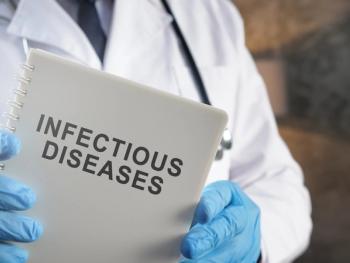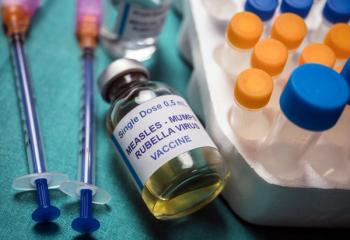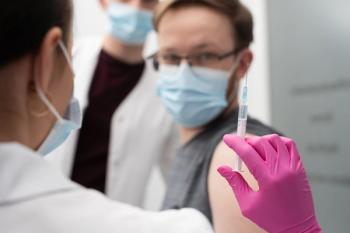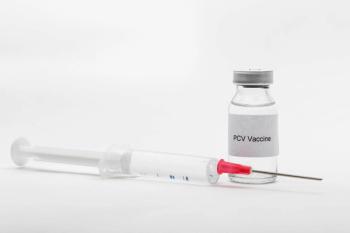
New Hepatitis B Testing Guidelines Include Universal Adult Screening
The CDC said that the new guidance will help identify more cases earlier for better treatment outcomes.
The CDC has updated its hepatitis B virus (HBV) screening and testing guidelines for the first time in 15 years, and published the guidance in the MMWR Recommendations and Reports.1
HBV can cause serious liver damage, cirrhosis, liver cancer, and death if not treated, according to MMWR authors. People with HBV are also 70% to 85% more likely to die prematurely. The virus is transmitted by bodily fluids and blood through activities such as sex, intravenous drug use, and pregnancy and delivery, which carries the greatest risk of chronic disease through perinatal infection. HBV cannot be cured; however, it can be treated with antivirals, liver function monitoring, and liver cancer surveillance.
Although HBV is a vaccine-preventable disease, only 30% of adults reported that they had been vaccinated in 2018. It is estimated between 580,000 and 2.4 million people have the virus, with two-thirds of those individuals unaware that they are infected.
The CDC has updated their HBV screening and testing guidelines to meet the goals of the Viral Hepatitis National Strategic Plan for the United States, which aims to increase the number of people aware they are infected by 58% by 2030. If this goal is reached, it would mean that 90% of people infected would know of their disease and can seek treatment.
“This report is a resource to advise health care professionals, public health officials, and organizations supporting awareness, prevention, and linkage to care about who to screen for HBV infection and which groups at risk for infection to test periodically,” the authors wrote.
Study authors noted that use of the word “screening” refers to serologic testing of people who are asymptomatic and not thought to be high risk, while testing refers to people with known exposure or people at increased risk.
Universal Adult Screening for HBV
The new guideline advises all adults aged 18 years or older be screened at least once using 3 laboratory tests: hepatitis B surface antigen (HBsAg), antibody to HBsAg (anti-HBs), and the new recommendation, total antibody to HBcAg (total anti-HBc). “Using the triple panel is recommended for initial screening because it can help identify persons who have an active HBV infection and could be linked to care, have resolved infection and might be susceptible to reactivation (e.g., immunosuppressed persons), are susceptible and need vaccination, or are vaccinated,” the authors wrote.
Universal screening is a change from former risk-based screening to identify people who are unaware they have been infected, which the authors said was not enough to detect cases. In addition, “a one-time HBV screening of adults would be complementary to the 2022 Advisory Committee on Immunization Practices (ACIP) recommendation to vaccinate all adults aged 19 to 59 years for HBV infection because screening establishes any history of infection, and vaccination protects from future infection and need for additional testing,” they wrote. They added that children and adolescents weren’t recommended for universal screening because incidence is low in this group, and vaccination rates are high.
Screening for Pregnant People
The authors said that all pregnant people should be screened during every pregnancy, with the first trimester as the optimal screening time. Researchers noted that screening should occur regardless of testing history or vaccination status.1 They added that prenatal visits would be a good time to perform triple panel screening, and that pregnant people who had this correctly timed panel before only need HBsAg screening if they have not had any possible HBV exposure. “Testing pregnant persons known to be chronically infected or immune enables documentation of the HBsAg test result during that pregnancy to ensure timely prophylaxis for exposed infants,” authors noted.
Testing for High-Risk Populations
The new guidelines recommend testing adults of any age with a history of increased risk if they may have been susceptible (unvaccinated or vaccine resistant) during a period where risk increased. People with ongoing risk exposure were also recommended for periodic testing.
Risk-based testing includes:
- individuals with a past or present hepatitis C infection (new)
- incarcerated or formerly incarcerated individuals
- individuals with past or present sexually transmitted infections
- individuals with multiple sex partners
- men who have sex with men
- infants born to HBsAg positive pregnant people
- individuals born in places where the infection rate is above 2%
- US born people whose parents are from countries with an infection rate of 8% or higher
- individuals with HIV
- individuals on dialysis, hemodialysis, or peritoneal dialysis
- individuals with elevated alanine transaminase or aspartate aminotransferase levels of unknown origin
“In addition, to provide increased access to testing, anyone who requests HBV testing should receive it, regardless of disclosure of risk, because many persons might be reluctant to disclose stigmatizing risks,” the authors wrote. This is a new recommendation. Additional screening may be appropriate for health care personnel, blood donors, refugees who have just arrived, individuals starting immunosuppressive or cytotoxic therapy, perinatally exposed infants, and people who have been part of an exposure event.
The authors recommended offering HBV vaccination at the same visit as serologic testing and stressed that results are not needed beforehand. They added that chronic and acute cases of HBV should be reported to local and/or state authorities in accordance with the law.
As far as cost, universal screening is much better than risk-based screening because higher rates of case detection can help reduce or prevent liver disease and death. They also said that early detection of chronic HBV is essential for successful treatment. “Risk-based testing alone has not identified most persons living with chronic HBV infection and is inefficient for providers to implement. Along with vaccination strategies, universal screening of adults and appropriate testing of persons at increased risk for HBV infection will improve health outcomes, reduce the prevalence of HBV infection in the United States, and advance viral hepatitis elimination goals,” the authors concluded.
Anna Legreid Dopp, PharmD, senior director, clinical guidelines and quality improvement, of the American Society of Health System Pharmacists (ASHP) spoke with Drug Topics about the new screening recommendations.She said they seek to raise awareness of the risk of chronic hepatitis B virus infection and to provide guidance for screening and testing. “It is similar to recent efforts to increase awareness of and screening for hepatitis C,” she explained.
Legreid Dopp said that practical steps pharmacists and pharmacy technicians can take to increase screening and testing for HBV include building awareness of this public health program, answering patient questions about screening efforts, and triaging patients to testing access points. “Pharmacists can also encourage patients to become vaccinated against hepatitis B and inform decisions related to antiviral treatment options,” she explained.
Legreid Dopp stressed that the evidence states that up to two thirds of those with HBV infection are not aware that they have it. “Surveillance efforts like this are critical in addressing public health problems, especially for these sort of ‘hidden’ disease states that carry significant risk of morbidity and mortality.”
Reference
1. Conners EE, Panagiotakopoulos L, Hofmeister MG, et al. Screening and testing for hepatitis B Virus infection: CDC Recommendations - United States, 2023. MMWR Recomm Rep. 2023;72(1):1-25. doi:10.15585/mmwr.rr7201a1
Newsletter
Pharmacy practice is always changing. Stay ahead of the curve with the Drug Topics newsletter and get the latest drug information, industry trends, and patient care tips.






































































































































